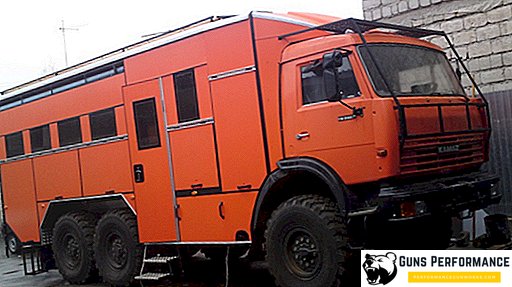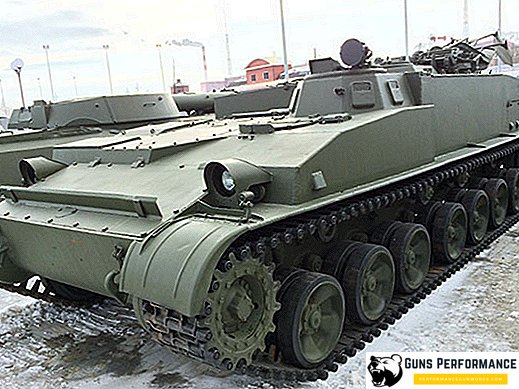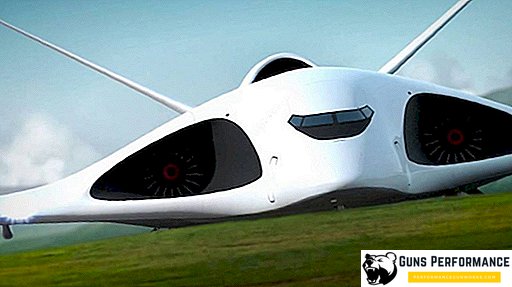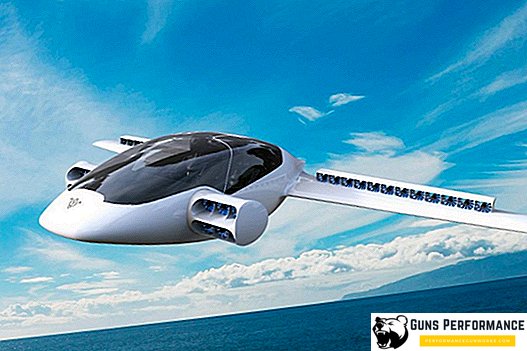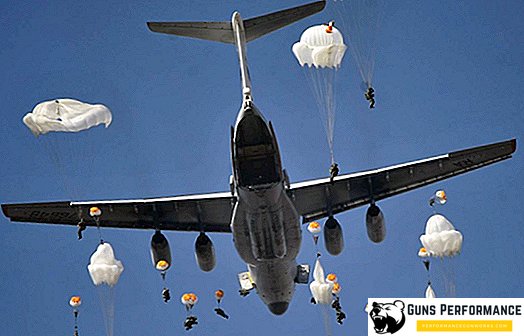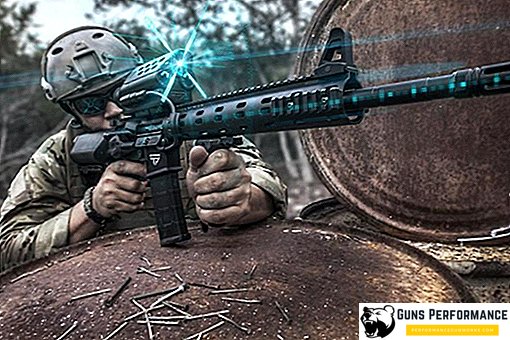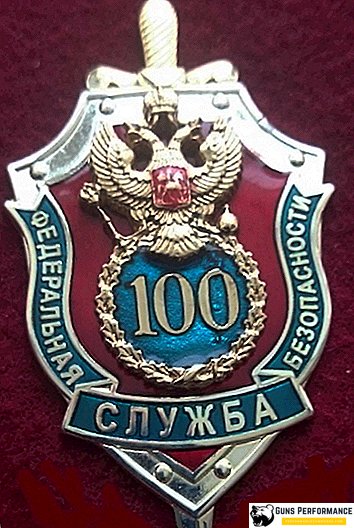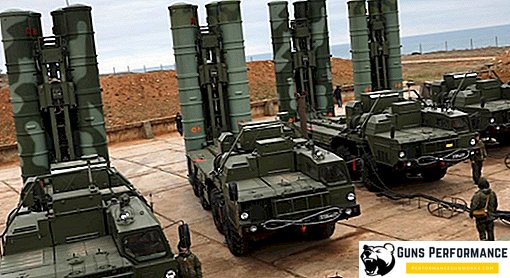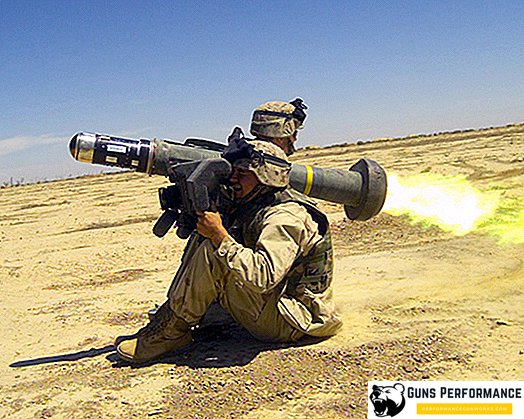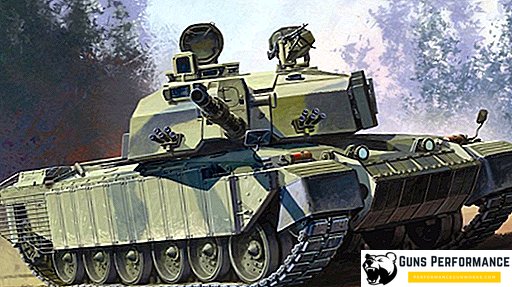
Challenger 2 is the main battle tank of the British Armed Forces, the development of which began in the second half of the 80s. In fact, this combat vehicle is a deep modernization of the Challenger tank, adopted by the army of Her Majesty in the early 80s. It can be added that Challenger 2 is the third tank in the English army that bears this name. Also "Challenger" was called one of the modifications of the medium tank "Cromwell" - the combat vehicle of the Second World War.
Currently, the Challenger 2 ("challenger challenging") is considered one of the most protected combat vehicles in the world.
In addition to the ground forces of Great Britain, the tank Challenger 2 is in service with the army of Oman. He managed to take part in real hostilities: in Kosovo and in the second Iraq campaign (from 2003 to 2010).

In 2009, BAE Systems, a manufacturing company, announced that it was curtailing the production of combat vehicles due to the lack of government orders for them and the inability to sell tanks in the international market. However, in 2014, the launch of the Challenger 2 modernization program was announced in order to extend its service life until 2035. However, at present, with the implementation of this program, certain difficulties have arisen.
Over the years of mass production, more than 400 Challenger 2 tanks were launched.

The history of the creation of the tank Challenger-2
In the 60s and 70s, the main battle tank (MBT) of the English army was the Chieftain. This vehicle possessed high firepower (120 mm cannon) and acceptable armor protection. Many experts called "Chieftain" one of the strongest Western tanks of their time. However, in the early seventies in the Soviet Union at the final stage were the work on the creation of a new generation of tanks - T-64, T-72 and T-80.
Therefore, in 1972 an agreement was signed between Great Britain and the FRG on the joint development of a new tank. Cooperation lasted until 1977 and ended without result. However, the technical backlog obtained during the implementation of the joint project allowed the British to create a new tank, the Challenger. And, although it was developed on the basis of the tank "Chieftain", the combat characteristics of the new machine were much more advanced.

Operation of the new tank began in 1983, its production continued until 1990. Vickers Defense Systems was involved in the development of the combat vehicle, with a total of 420 Challengers manufactured.
Tank "Challenger" participated in the first war in the Persian Gulf (1990), while showing almost complete unsuitability for use in harsh desert conditions.
In general, it should be noted that a real squall of criticism hit the Challenger almost immediately after its appearance. First of all, the machine’s low reliability, the inconvenience of the crew’s work, and the unsatisfactory fire control system (LMS) were noted. The critics' failure of the British tankmen in the Canadian Army Cup, which was held in 1987, further ignited the critics. The failure led to real confusion of the British military. The scandal turned out so loud that "Iron Lady" Margaret Thatcher demanded that the results of the investigation be reported to her personally.

A number of British and foreign experts called the lack of competition among British tank builders the main reason for the failures with Challenger: Vickers was absolutely monopolistic.
Under these conditions, the British government announced a tender for the creation of a new tank for the country's land forces. In addition to Vickers, foreign manufacturers were also admitted to it: the Americans with the Abrams M1A1, the Germans with the Leopard II, and even the Brazilians who offered the EE-T1 Osorio tank. Considered by the organizers of the competition and the promising French car "Leclerc".
However, the competition was more like a well-organized presentation. The fact is that the British simply could not give this order to foreigners, it would mean putting an end to their own tank building. For Vickers, failure in a tender meant inevitable bankruptcy, along with hundreds of subcontractors would have gone to the bottom. Thus, the British government faced a difficult choice, and it was not about the technical characteristics of the tank, but about the fate of the strategic industry as a whole. Tests of military vehicles were held at the site in Bovington, from the English manufacturer, the first Challenger took part in them. If we analyze the thematic publications of those years, then the impression may be that both the Americans and the Germans themselves did not really believe in the possibility of their victory.
Predicting the winner of the tender was not difficult: his favorite was the new tank company Vickers - "Challenger 2". And this is despite the fact that at the time of the competition this machine existed only on paper. The presentation of this project took place only in early 1987. The main difference was the car tower improved form, more advanced SLA and a new gun. In fact, the engineers corrected the main flaws in the design of the Challenger, which was the most criticism.
At the beginning of next year, Vickers manufactured eight pilot towers at its own expense, and in December 1988 a contract was signed with the Ministry of Defense (totaling £ 90 million) for the construction of nine experimental tanks. Tests of the first of them began in 1989. In the summer of 1991, after quite lengthy comparative tests (Abrams, Leopard 2 and Leclerc participated), the British Ministry of Defense decided to support the domestic manufacturer and recognized Challenger 2 as the winner.

Serial production of the tank was established at the plants in Leeds and Newcastle, and more than 250 contracting companies took part in the manufacture of the vehicle. The first cars left the assembly line in the summer of 1994. In the same year, serious tests of the reliability of the machine were carried out, during which the tank was operated in particularly harsh conditions. Challenger 2 successfully passed them and proved that it fully complies with the requirements put forward by the military.

The main "highlight" of the new machine was its tower of improved design, in shape it differs from the Challenger Tower and has a lower radar visibility. With the advent of radar reconnaissance aircraft, tank builders began to pay increased attention to this aspect. The tank received a new 120-mm cannon L30 with a length of 55 calibres and chrome-plated barrel to increase its resource. The designers paid a lot of attention to improving the accuracy and accuracy of the gun.
The body of the new car almost did not differ from the body of the Challenger, but its design has undergone major improvements. The hull and mounted screens (like the tower) of the Challenger-2 were made of improved chobham-type armor (its composition is still a secret), which provided the best anti-shear protection. In front of the hull of the tank were installed nodes for fastening dozer equipment. In the design of the engine and transmission, 44 changes were made.

Some design solutions used on the Challenger-2 are clearly copied from Soviet combat vehicles. The Challenger 2 was the first Western tank to receive additional external mounted tanks - a typical element for most cars produced in the USSR. English designers made them easy to drop.
To create a smoke screen, the Challenger 2 could use not only special mortars, but also diesel fuel injection into the exhaust system - this is another solution typical of the Soviet tank construction school.

The first cars began to arrive in the army in 1995. Their operation immediately revealed numerous defects associated with the control system of weapons and sights. Vickers had to fix them at their own expense. Therefore, the mass supply of tanks in the combat units was delayed. In 1995, a contract was signed for the supply of 18 tanks to the armed forces of Oman.
Tanks intended for Arabs differed somewhat from the basic modification. They had improved the cooling and air-conditioning system, and a 12.7 mm M2 machine gun mounted on the turret. It should be noted that the "desert" modification of the machine was originally designed to participate in the tender for the armed forces of Saudi Arabia, in which, apart from the British, the Americans participated with "Abrams". As a result, the Saudis chose a more eminent "American." However, soon the desert version of the Challenger was useful to the British themselves, after Britain took part in the second Gulf War.

In 2009, BAE Systems (today includes Vickers Defense Systems) announced the discontinuation of the Challenger-2 MBT production. A year earlier, a program was launched to modernize tanks that are in service with British ground forces. Machines received a new set of hinged armor, improved gun and engine, a more perfect transmission and fire control system. It was planned to upgrade 250 combat vehicles.
In 2014, the next stage of modernization of the Challenger 2 (CR2 LEP) was announced, which according to the British military will be able to extend the life of these combat vehicles until 2035 and significantly improve their combat performance. However, there are some problems. The fact is that Vickers Defense Systems (as a part of BAE Systems) has already lost the competence to modernize tanks, the only English company that worked with Challenger 2 is Babcock DSG, but it only carried out maintenance and supply of these machines. However, both of these firms are participating in the tender. In addition, applications were filed by American Lockheed Martin UK and Israeli Elbit Systems. It is likely that for the successful implementation of the planned modernization of the participating companies of the competition will have to unite. Oman, which also has Challenger 2 tanks, also expressed its interest in modernizing cars.

In addition, it is not entirely clear what exactly will be improved in the tank. This year, the decision of the British military department is expected regarding the installation of a new guided missile system and optical-electronic suppression systems. Information appeared in the media about the possible replacement of the gun, but it is not clear whether the British have enough money for it. Much will depend on the budget that will be allocated by the state for the modernization program, and the number of cars planned for improvement.
Design description Challenger-2
MBT "Challenger-2" is made according to the classical layout scheme. In the forward part of the vehicle there is a command compartment, followed by a fighting compartment and engine compartment located in the stern of the tank.

In the department of management is the place of the driver, which is located on the central axis of the machine, to the right and left of it are parts of the ammunition. The driver controls the tank in a reclining position. The remaining three crew members - gunner, commander and loader - are located in the fighting compartment.
The turret and hull of the tank are made of second-generation multi-layer Chobham armor. It is possible to install (optional) ROMOR dynamic protection modules and lattice screens on the sides of the machine body. The only "weak" zone of the tank is the lower frontal detail, which, in fact, is a regular sheet of armor steel, but it can be enhanced with dynamic protection. Taking into account the dynamic protection and lattice screens, the total mass of the Challenger-2 is 74.95 tons. It is believed that the overall level of protection of the tank against BPS and CS is not inferior to the German Leopard-2 modification of A5.
The Challenger 2 is armed with a L30A1 rifled 120mm cannon, the barrel of which is chrome-plated. Ammunition is 52 shots of separate loading, and the charges and projectiles are stored separately from each other. The composition of the ammunition includes high-explosive fragmentation, armor-piercing and smoke projectiles.

Drives pointing tools electric. Outside the barrel is closed with a special casing, the gun L30A1 is stabilized in two planes.
A machine gun L94A1 (7.62 mm) is paired with a gun on the roof of the turret there is another remote-controlled machine gun L37A2 (7.62 mm).
The tank has a fire control system developed by General Dynamics. The basic modification of the machine had one thermal imager, which gave the picture to the commander and gunner. Since 2007, each of them received their own device. A well-trained crew on a Challenger 2 tank can hit seven targets in one minute.

The machine’s MSA includes General Dynamics Canada ballistic computer, Commander VS 580 stabilized day sight (360 ° viewing angle, the same installed on the French Leclerc), as well as the main (also stabilized) gunner's sight with a laser range finder and thermal imager.
Challenger 2 has a hydropneumatic suspension. The tank is equipped with a 1200 l Perkins engine. with. and hydromechanical transmission TN-54, which provides 6 forward and 2 reverse gears.
Tank application
The Challenger 2 tanks were actively used by British forces during the operation in Iraq (2003-2010). And it should be noted that these combat vehicles showed themselves very well. In particular, they participated in the so-called Battle of Basra, where they provided fire support to units storming the city.

For the entire time of the Iraqi campaign, only two serious incidents with these combat vehicles were known, and in one of the cases Challenger 2 was destroyed by "friendly" fire. At the same time killed two crew members. In 2007, an RPG grenade hit the tank's lower frontal part and pierced it. As a result, the driver was injured.
During the Basrah assault, some of the British Challengers had up to 70 hits from hand grenade launchers, but did not get armor penetration. The Challengers also worked very effectively against Iraqi tanks, but it should be noted that these were very old Soviet-made vehicles.

In general, the Challenger 2 proved to be in the difficult conditions of the desert at its best, as a very reliable and effective combat vehicle with excellent maneuverability. A total of 120 tanks were deployed in Iraq.
Characteristics of TTX Challenger-2
Below are the main characteristics of the tank Challenger 2:
- combat weight - 62.5 tons;
- body length - 8.3 m;
- width - 3.5 m;
- height - 2.5 m;
- weapons - L30A1 cannon (120 mm) and two machine guns (7.62 mm);
- guns ammunition - 52 shots;
- engine - Perkins CV-12, 1200l. with.;
- speed on the highway - 59 km / h;
- speed on rough terrain - 40 km / h;
- power reserve - 450 km;
- crew - 4 people.



